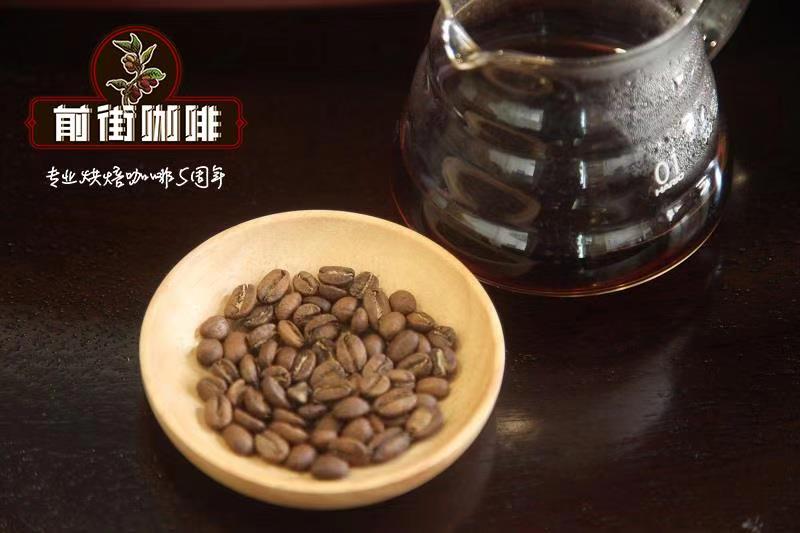Introduction to the flavor of Panamanian coffee beans

Professional coffee knowledge exchange more coffee bean information please follow the coffee workshop (Wechat official account cafe_style)
Introduction to Qianjie Coffee-Panamanian coffee bean treatment
At the end of the 19th century, European immigrants took coffee seeds from Ethiopia through Kenya and Tanzania, and then through Costa Rica to Panama, becoming the origin of coffee cultivation in Panama. In recent years, Panama is well-known as a producer of high-quality coffee. The unique aroma of Rosa coffee shines brilliantly in the world coffee market, which also makes the attention of Panamanian coffee soar all the way.
Varieties and treatment methods
Panama also grows iron pickup and bourbon coffee, but some are Kaddura and Kaduai. Water washing, sun exposure and honey treatment, which has sprung up in the past two years, are all used in Panama.
Place of Origin
Panama's coffee producing area is mainly located in Chirico County, which borders Costa Rica to the west. Bogut, located on the side of the Baru volcano, is the oldest coffee grower, at an altitude of 1000-2000m. The area will have ash from the north wind and the smell will rise. This growing environment gives the coffee produced here a special flavor. Bogart's roads and processing equipment are very perfect, coffee production conditions are also very complete. In recent years, as a tourist destination, it is also very popular, so there are many people who are no longer engaged in coffee cultivation.
Qianjie Coffee-Flower Butterfly Coffee
Hand flush Panamanian Flower Butterfly, V60, recommended 15g powder, 89-90 degrees water temperature, gouache ratio 1:15, small Fuji grind degree 3.5pm v60 filter cup, the first injection of 30g water for 28-30s, injection to 110g water, cut off water at 140g, wait for powder bed water to half and then water injection, slow water injection until 225g water, 5g in the last section, not 5g, extraction time 2night 00s.
This hand punch, high sweetness and soft sweetness, for reference only, we fine-tune according to their favorite taste.
Flavor: clean and thorough body, white grape, caramel aroma followed by honey, Alpine black tea aroma charming! High sweetness, medium acidity and round taste.
END
Important Notice :
前街咖啡 FrontStreet Coffee has moved to new addredd:
FrontStreet Coffee Address: 315,Donghua East Road,GuangZhou
Tel:020 38364473
- Prev

Introduction to the flavor characteristics of Panamanian coffee beans what is the flavor of butterfly coffee beans?
Professional coffee knowledge exchange more coffee bean information please follow the coffee workshop (Wechat official account cafe_style) front street coffee introduction-Panamanian flower butterflies on this island less than 100 kilometers wide, the wind constantly changes direction; rain without warning, clouds floating in the mountains with fog and ice rain, the global climate system intertwined and collided, creating a surprise
- Next

Brief introduction of Panamanian Flower Butterfly how to drink Panamanian Coffee is correct
Professional coffee knowledge exchange more coffee bean information please follow the coffee workshop (Wechat official account cafe_style) front street coffee introduction-Panama Flower Butterfly Panama is a Central American country, bordered by Costa Rica to the west and Colombia to the east. Anyone who knows anything about individual coffee should know that Panamanian coffee is known as Geisha (the name of Rosa), a geisha at the Jade Manor.
Related
- Beginners will see the "Coffee pull flower" guide!
- What is the difference between ice blog purified milk and ordinary milk coffee?
- Why is the Philippines the largest producer of crops in Liberia?
- For coffee extraction, should the fine powder be retained?
- How does extracted espresso fill pressed powder? How much strength does it take to press the powder?
- How to make jasmine cold extract coffee? Is the jasmine + latte good?
- Will this little toy really make the coffee taste better? How does Lily Drip affect coffee extraction?
- Will the action of slapping the filter cup also affect coffee extraction?
- What's the difference between powder-to-water ratio and powder-to-liquid ratio?
- What is the Ethiopian local species? What does it have to do with Heirloom native species?

